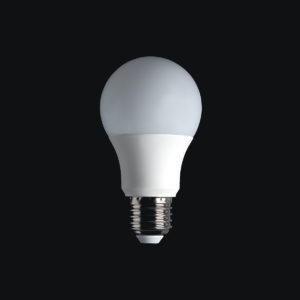
Year: 2018, 2020, and 2025
Market size: $1.83 billion, $1.8 billion, and $6.68 billion, respectively
Today’s market size shows the total global revenues for high purity alumina (HPA) in 2018, 2020, and projected for 2025.1 HPA is a high purity form of aluminum oxide (Al2O3). It is an essential ingredient in the production of synthetic sapphire. Synthetic sapphire is used in the manufacture of substrates for LED lights, semiconductor wafers, and scratch-resistant sapphire glass for wristwatch faces, optical windows, and smartphones. HPA is also used to manufacture bio-medical devices such as pacemakers, intraocular cataract lenses, vascular grafts, orthopedic pins, and surgical tools. As a coating, it is used on the separator sheets in lithium-ion batteries.
In 2018, global demand reached 19,000 tons per annum (TPA). By some estimates, demand will reach 272,000 TPA in 2028. Growth in the HPA market will primarily be driven by demand for LED lighting and electric vehicles. In 2018, LED lighting garnered about half of the HPA market. Growth will come from government incentives for the installation of energy-efficient lighting, declining prices, consumer demand for environmentally-friendly lighting alternatives, and the increased usage of LED lighting in automotive manufacturing. In 2020, electric vehicles accounted for 4.2% of light vehicle sales worldwide, almost double the percentage in 2019. Thirteen countries saw electric vehicle sales of greater than 10% of all passenger cars sold. Thanks to tax exemptions, toll exemptions, and other incentives nearly 75% of all passenger car sales in Norway in 2020 were for electric vehicles. By unit sales, China led with 1.3 million plug-in electric vehicles sold in 2020, a 15% jump from the year before. Some countries such as Germany, France, and the United Kingdom had triple-digit sales growth over this time. With battery costs dropping 90% over the last 10 years, more than 600 electric vehicle models launching by 2025, and governments worldwide mandating transitions to clean fleets by 2030 or 2050, the World Economic Forum predicts that by 2040, half of all new vehicles sold will be electric.
HPA comes in three grades. 4N is 99.99% pure. It’s commonly used in LEDs, energy storage capacitors, lithium-ion batteries, and decorative and bright finishes. In 2018, this grade of HPA constituted about 64% of sales.2 5N is 99.999% pure and is used in liquid crystal displays and in thin-film applications in the semiconductor industry. Because of its scratch resistance, chemical stability, and extreme hardness, it, along with 4N, is used in synthetic sapphire production. 6N is 99.9999% pure and is the most expensive grade of HPA. It’s used in semiconductors, solid-state lasers, sensors, abrasives, alumina ceramics, and separator membranes. 6N is expected to see significant growth as demand increases from the aerospace and defense, automotive, health care, and electronics industries.By region, the Asia-Pacific region had a 67.3% revenue share in 2018, with China, Japan, and Australia being the major markets. All have been expanding manufacturing capacity to meet the demand for LEDs, lithium-ion batteries, and smartphones at home and elsewhere. Europe and North America are each expected to experience a greater than 14% compound annual growth rate through 2025 as demand for lithium-ion batteries in Europe and LEDs in both regions grows significantly. There are a small number of major producers operating globally. These include Sumitomo Chemical Co. Ltd., Sasol Ltd., Baikowski SAS, Hebei Heng Bo New Material Technology Co. Ltd., Nippon Light Metal Co. Ltd., Altech Chemicals Ltd., and Polar Sapphire Ltd.
1 Some sources predict much lower future revenues, in the $4.5 billion to $4.8 billion range for 2026-2027. The 2025 projection is from Grand View Research.2 Source: “High Purity Alumina Market,” Transparency Market Research Report Preview, April 26, 2018 available online here.
Sources: “High Purity Alumina Market Size, Share & Trend Analysis Report by Product (4N, 5N, 6N), by Application (LED, Semiconductor, Lithium-Ion Battery, Sapphire), by Region and Segment Forecasts, 2019 – 2025,” Grand View Research Report Summary, November 2019 available online here; “High Purity Alumina Market Size Worth $6.68 Billion by 2025: Grand View Research, Inc.,” CISION PR Newswire, February 20, 2020 available online here; Kiran Pulidindi and Akshay Prakash, “High Purity Alumina (HPA) Market Size, by Technology (Hydrolysis, HCl Leaching), by Product (4N, 5N, 6N), by Application (LEDs, Semiconductors, Phosphor, Sapphire), Industry Analysis Report, Regional Outlook, Growth Potential, Price Trends, Competitive Market Share & Forecast, 2021 – 2027,” Global Market Insights, February 2021 available online here; “High Purity Alumina Market,” Transparency Market Research Report Preview, April 26, 2018 available online here; Felix Richter, “Chart: Which Countries Have the Most Electric Cars?” World Economic Forum, February 19, 2021 available online here; Jonathan Eckart and Frank Muehlon, “Here’s How Electric Vehicles Can Keep Us on the Road to Paris,” World Economic Forum, September 11, 2020 available online here; Felix Richter, “Who Leads the Charge Towards Electric Mobility?” Statista, February 16, 2021 available online here; “High Purity Alumina (HPA),” Altech Chemicals Ltd. available online here; “Global High Purity Alumina Market (2020 to 2026) – by Type, Technology and Application – ResearchAndMarkets.com,” BusinessWire, October 15, 2020 available online here.
Image source: Federico Bottos, “Idea,” Unsplash, July 19, 2018 available online here.
